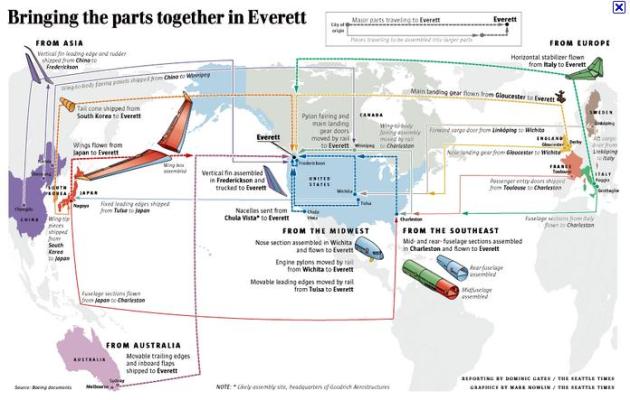Product Design and Supply Chain
July 23, 2011 4 Comments
Earlier in the week I attended a fascinating forum led by Dr Omera Khan and Professor Martin Christopher dedicated to studying product design and how it relates to the supply chain. This little studied topic (only 36 articles have appeared in leading supply chain journals on the topic in the last 10 years) is a major potential source of business improvement as between 70% and 80% of a products whole life cost is decided at the design stage by decisions such as the:-
- The Number of Components
- Commonality of parts across product portfolio
- Lead time of materials
- Physical Characteristics
- Country of Supply
So how do we prevent design having such negative effects on supply chain cost and risk? The answer is by involving the supply chain in the product design. The effect of design on the supply chain means that it is essential that logistics and supply chain staff are involved at the product design stage. So how can design reduce supply chain costs? Well one way is to design the product in such a way that it enables supply chain agility which is the ability to respond rapidly to unexpected changes in demand. Such agility is becoming increasingly important in many markets as:-
- It is becoming increasingly difficult to forecast demand
- Short Product Life Cycles mean that forecasting is especially difficult and firms do not want to hold obsolete inventory
- Increase the amount of commonality between componants and materials e.g. Vauxhall & Audi sharing platforms and lego who have reduced brick types from 14000 to 6500. This helps to reduce inventory in the organisation and increases forecast accuracy as it is easier to forecast at an aggregated level
- Use suppliers with short lead times as this will allow the firm to quickly adapt to changing demand therefore allowing them to carry less inventory
- Use shorter planning horizons
- Increase modularity as it enables easier construction and assembly
- Design products for ease of delivery as this will reduce transport and storage cost whilst also reducing damage
- Use Postponement with product being held in its generic form. Because the inventory is generic it is more flexible allowing it to be used in many modules or products. This will increase forecast accuracy as forecasting is easier at the generic level additionally postponement allows late product customisation therefore allowing economies of scope in production and potentially reducing returns as the customer has been involved in the design.
- Appoint a person to champion the supply chain – design interface and to ensure that their is good visibility between the teams
- Encourage cooperation between all elements of the supply chain (internal and external) to minimise product design supply chain risk
- Utilise cross functional teams to contribute to the product design process
- Co-location of teams to enable information transfer on a daily basis
- Develop T shaped people with deep expertise in one area (design) but an understanding of other areas (supply chains) and vice versa. As this will allow the development of constrained design were design decisions are limited by supply chain constraints.


